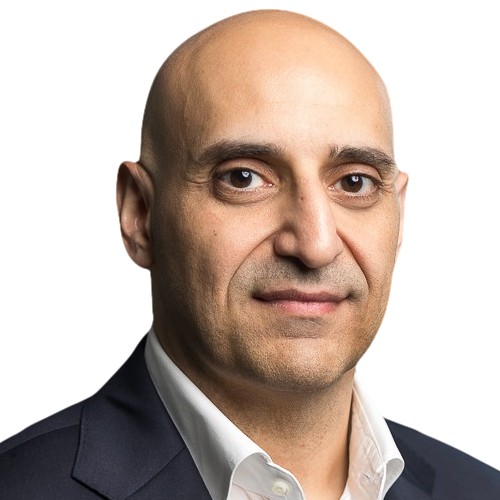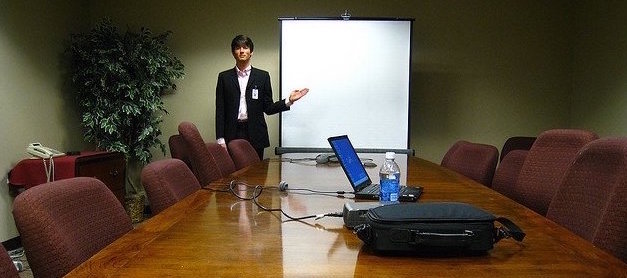Bootstrapping with Services at the Cusp of AI and FinTech: Vahe Andonians, Founder of Cognaize (Part 1)

In this case study, you will hear Vahe talk a lot about bootstrapping – bootstrapping to exit, bootstrapping with services, so on. You will also learn a nifty way of building domain knowledge on top of horizontal AI expertise. This is a valuable and extremely interesting way of building AI companies for entrepreneurs to consider.
>>>Featured Videos
604th 1Mby1M Roundtable Recording
In case you missed it, you can listen to the recording of this roundtable here:
April 27 – 605th 1Mby1M Mentoring Roundtable for Entrepreneurs

Entrepreneurs are invited to the 605th FREE online 1Mby1M Mentoring Roundtable on Thursday, April 27, 2023, at 8 a.m. PDT/11 a.m. EDT/5 p.m. CEST/8:30 p.m. India IST.
If you are a serious entrepreneur, register to “pitch” and sell your business idea. You’ll receive straightforward feedback, advice on next steps, and answers to any of your questions. Others can register to “attend” to watch, learn, and interact through the online chat.
You can learn more here and REGISTER TO PITCH OR ATTEND HERE. Register and you will receive the recording by email, even if you are unable to attend. Please share with any entrepreneurs in your circle who may be interested. All are welcome!
Video FAQs
Can 1M/1M Help Me Raise Money?
How Does 1M/1M Democratize Entrepreneurship Education?
How Does 1M/1M Democratize Management Consulting?
When Is The Right Time To Join 1M/1M?
Can 1M/1M Help Me With Business Development?
Can 1M/1M Help Me With Market Sizing?
Can 1M/1M Help Me Validate My Product?
Will I Have Private 1-on-1 Sessions In 1M/1M?
How Does 1M/1M Help Entrepreneurs Connect With Silicon Valley?
Mentoring or Consulting?
Why Does 1M/1M Charge $1000 a Year?
Why Does 1M/1M Partner With Local Organizations?
Why Don\’t Mentoring Networks Work?
Why Is It Important To Study With 1M/1M Now?
Dan Stewart Story
Vikrant Mathur Story
Catching Up On Readings: Startup Grind Global 2023
This feature from SFGATE covers the highlights of Startup Grind Global Conference held in Redwood City, California. For this week’s posts, click on the paragraph links.
>>>Digital Nomad Building a $5M+ E-Commerce Business: IntelligentLabs CEO Rus Hughes (Part 4)
Sramana Mitra: The bulk of the business is based on doctor recommendations?
Rus Hughes: I would say word of mouth. When we started, it was heavily weighted to doctors. Brand reputation is the crux of the business. More and more brands are doing it now. When we started in 2014, there was a scandal with a few of the larger brands in America. All of the supplements they were selling had to be pulled off from the shelves.
>>>Colors: Bariloche II

I’m publishing this series on LinkedIn called Colors to explore a topic that I care deeply about: the Renaissance Mind. I am just as passionate about entrepreneurship, technology, and business, as I am about art and culture. In this series, I will typically publish a piece of art – one of my paintings – and I request you to spend a minute or two deeply meditating on it. I urge you to watch your feelings, thoughts, reactions to the piece, and write what comes to you, what thoughts it triggers, in the dialog area. Let us see what stimulation this interaction yields. For today – Bariloche II
Bariloche II | Sramana Mitra, 2021 | Watercolor, Pastel, Brush Pen | 9 x 12, On Paper
Colors: Bariloche III

I’m publishing this series on LinkedIn called Colors to explore a topic that I care deeply about: the Renaissance Mind. I am just as passionate about entrepreneurship, technology, and business, as I am about art and culture. In this series, I will typically publish a piece of art – one of my paintings – and I request you to spend a minute or two deeply meditating on it. I urge you to watch your feelings, thoughts, reactions to the piece, and write what comes to you, what thoughts it triggers, in the dialog area. Let us see what stimulation this interaction yields. For today – Bariloche III
Bariloche III | Sramana Mitra, 2021 | Watercolor, Pastel, Brush Pen | 9 x 12, On Paper
Digital Nomad Building a $5M+ E-Commerce Business: IntelligentLabs CEO Rus Hughes (Part 3)
Sramana Mitra: How long did it take you to get to a million dollars in revenue?
Rus Hughes: Two and a half years.
Sramana Mitra: What was your inventory strategy during this period? Did you have to finance inventory?
Rus Hughes: We were doing it organically. I kept my cost of living super low. We didn’t take money from the company until 2017.
>>>